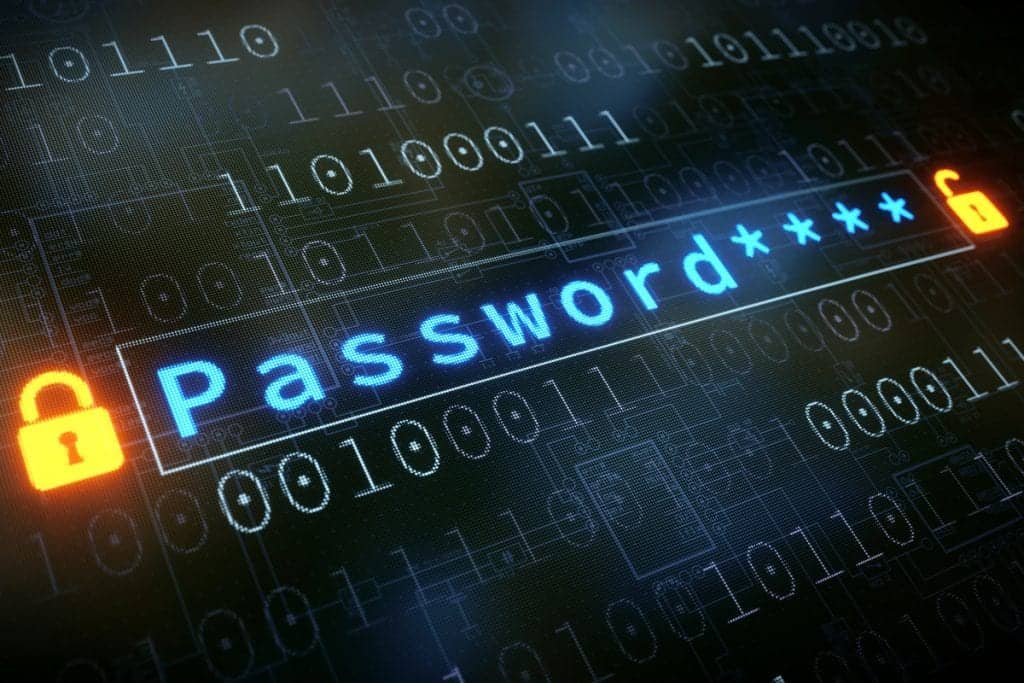In today’s digital landscape, cybersecurity compliance is more important than ever. Failing to meet industry standards can expose your business to cyberattacks, data breaches, and significant legal and financial penalties. Without proper compliance, you risk compromising sensitive customer data, damaging your reputation, and facing costly lawsuits.
Fortunately, with the right cybersecurity solutions, you can ensure your business stays compliant and protected. CMIT Solutions offers tailored services that help businesses navigate complex regulations, stay updated on evolving laws, and maintain continuous security monitoring.
Protect your business today—call (800) 399-2648 or contact us to book a consultation and get started with our cybersecurity solutions.
What is cybersecurity compliance
Cybersecurity compliance refers to adhering to a set of established regulations, standards, and practices aimed at securing sensitive data and ensuring privacy. It requires businesses to implement effective security measures that mitigate risks from cyber threats and comply with legal obligations, creating a robust framework for protecting critical information.
Cybersecurity Compliance Standards & Requirements
Cybersecurity compliance involves meeting specific guidelines and regulations to manage information security and reduce the risk of cyber threats. Adhering to these regulations helps businesses safeguard data privacy, protect against breaches, and build trust with customers.
Common cybersecurity compliance standards for different sectors include:
- GDPR (General Data Protection Regulation): For businesses handling personal data of EU citizens, ensuring privacy rights and data security.
- HIPAA (Health Insurance Portability and Accountability Act): Healthcare organizations must protect sensitive medical information.
- PCI DSS (Payment Card Industry Data Security Standard): For companies processing credit card transactions, ensuring secure handling of payment information.
- NIST Cybersecurity Framework: A flexible, risk-based approach to managing cybersecurity risks, suitable for various industries.
- FedRAMP: Required for cloud services providing services to U.S. government agencies, ensuring they meet stringent security standards.
These regulations influence your business by:
- Defining what data you need to protect and how to safeguard it.
- Mandating incident reporting, which can save time and costs when breaches occur.
- Driving continuous improvement by encouraging regular audits, vulnerability assessments, and employee training.
Why is cybersecurity compliance important?
Cybersecurity compliance is vital for organizations to ensure they meet established security standards and regulations aimed at protecting sensitive data from cyber threats. Adhering to these frameworks helps mitigate legal risks, enhance customer trust, and reduce the likelihood of data breaches. Below are key reasons why cybersecurity compliance is crucial for businesses:
Data Protection
Compliance ensures that businesses have the necessary policies and security measures in place to protect sensitive data such as personal details, financial records, and intellectual property. By following the required standards, organizations can minimize the risk of unauthorized access, ensuring their data is kept safe and secure.
Legal and Regulatory Requirements
Organizations are subject to a range of legal and regulatory obligations, depending on their industry. Cybersecurity compliance ensures that businesses meet specific standards such as GDPR, HIPAA, and PCI DSS, helping them avoid hefty fines and legal consequences. Failure to comply with these regulations can result in legal penalties and harm to the organization’s financial stability.
Reputation Management
A cybersecurity breach can seriously damage a business’s reputation, leading to customer loss, public backlash, and loss of trust. Compliance with recognized standards shows a commitment to safeguarding data and maintaining privacy, which helps build and retain customer trust, ensuring long-term brand integrity.
Risk Mitigation
Cybersecurity compliance enables organizations to proactively identify and address potential vulnerabilities within their systems. By regularly assessing risks, implementing controls, and following security protocols, businesses can significantly reduce their exposure to cyberattacks, ensuring that sensitive data remains protected against evolving threats.
Business Continuity
Compliance ensures that organizations have contingency plans in place to maintain operations even in the event of a cyberattack. Businesses that maintain compliance are better equipped with incident response plans, backup strategies, and disaster recovery measures, minimizing downtime and disruption to critical functions.
Additional reading: how to prevent cyber attacks
The consequences of not complying with cybersecurity compliance requirements
Failure to adhere to cybersecurity compliance can expose your business to a range of serious risks. Below are the key consequences businesses face when failing to comply:
- Legal Penalties and Fines: Non-compliance with regulations like GDPR, HIPAA, or PCI DSS can result in heavy financial penalties. These fines can be substantial, potentially amounting to millions, depending on the severity of the breach and the regulations violated.
- Loss of Customer Trust: A failure to protect sensitive data or comply with privacy regulations can erode customer confidence. Once trust is lost, customers are more likely to take their business elsewhere, leading to long-term revenue and relationship losses.
- Damage to Reputation: Publicized security breaches due to non-compliance can severely harm a business’s reputation. The negative publicity from such incidents can deter potential customers and partners, making recovery and brand rebuilding challenging.
- Increased Risk of Cyberattacks: When businesses do not follow proper cybersecurity protocols, they become easy targets for hackers. Non-compliance often leads to insufficient safeguards, making it more likely for cybercriminals to exploit vulnerabilities and gain unauthorized access to systems.
- Business Disruption: Security breaches caused by non-compliance often lead to system downtime. This downtime disrupts operations, affects service delivery, and hampers productivity, resulting in both time and financial losses.
- Regulatory Investigations: Failure to meet compliance standards can trigger investigations by regulatory bodies. These investigations can be costly, involving legal fees and the potential for additional fines, penalties, or sanctions.
- Increased Insurance Premiums: A breach resulting from non-compliance may lead to higher premiums for cyber insurance. Insurers may raise rates or refuse to renew coverage if they deem that a business is not implementing adequate security measures.
- Loss of Competitive Advantage: Businesses that fail to comply with cybersecurity regulations risk losing their competitive edge. Customers and business partners are more likely to choose competitors who prioritize compliance, placing non-compliant businesses at a disadvantage.
To protect your business from risk, reach out to our IT experts today to see how we can meet your cybersecurity needs!
How to ensure cybersecurity regulatory compliance for your business
Ensuring cybersecurity regulatory compliance for your business involves implementing a structured approach that adheres to industry standards and legal requirements.
Leverage expert cybersecurity solutions
Managing cybersecurity compliance can be complex, especially with constantly changing regulations and evolving threats. To ensure your business stays protected and compliant, consider onboarding a professional cybersecurity solutions provider like CMIT Solutions. They can help streamline your compliance processes, conduct risk assessments, implement necessary security controls, and provide ongoing monitoring and support.
Develop a comprehensive compliance strategy
Start by identifying the specific regulations that apply to your business, such as GDPR, HIPAA, or PCI DSS. Create a clear compliance plan that outlines the necessary steps to achieve and maintain adherence to these standards, ensuring that every department is aligned with the required security measures.
Conduct regular risk assessments
Regular risk assessments help identify potential vulnerabilities within your systems and processes. By proactively evaluating threats, you can prioritize security measures to mitigate risks and implement strategies to address the most pressing vulnerabilities before they become major issues.
Focus on data privacy and protection
Implement encryption, secure data access management, and ensure ethical data processing to protect your customers’ information and maintain their trust.
Adopt industry-specific standards and NIST framework
Depending on your industry, specific standards apply. The NIST Cybersecurity Framework is widely adopted to manage cybersecurity risks and ensure that your systems are continuously evolving to meet regulatory standards.
Establish clear incident response plans
An incident response plan ensures your team knows how to react quickly and effectively if a breach occurs. With well-defined procedures, your business can minimize the impact of cybersecurity incidents and quickly restore operations with minimal disruption.
Implement vendor risk management
Many businesses rely on third-party vendors to handle sensitive data or provide key services. Ensure that your vendors comply with the same cybersecurity standards by conducting risk assessments and regularly evaluating their security practices to protect against potential vulnerabilities.
Provide ongoing employee cybersecurity training
Employees must understand the importance of cybersecurity and how to identify potential risks, such as phishing or weak passwords. Regular cybersecurity training ensures that your team is equipped with the knowledge to spot threats and follow security best practices to minimize human error-related breaches.
Create and maintain cybersecurity policies
A formal cybersecurity policy sets expectations for all employees regarding secure practices and data handling. Establish clear policies on acceptable use, incident response, and data protection to ensure consistency and compliance across your organization.
Continuous monitoring and auditing
Compliance is not a one-time effort. Continuous monitoring and regular security audits are essential to ensuring ongoing adherence to cybersecurity standards. Regular reviews help detect vulnerabilities early and ensure that your security controls remain effective and up to date.
Document compliance efforts and stay updated
Keep detailed records of all compliance activities to demonstrate adherence to regulatory requirements during audits or inspections. Staying updated on regulatory changes ensures that your business can quickly adjust to new or evolving compliance standards, keeping your systems secure.
Additional reading: network threat detection
How to create your own cybersecurity compliance program
Building a cyber security compliance program requires strategic focus and careful planning. To ensure your program aligns with regulations and protects your business, follow these high-level principles:
- Develop a compliance-focused culture: Foster a culture where security is a shared responsibility across all departments, promoting awareness at every level of the organization.
- Align with relevant regulations and standards: Identify and align your program with the most applicable compliance frameworks for your industry to meet both legal and operational needs.
- Foster cross-department collaboration: Ensure collaboration between IT, legal, operations, and HR teams to streamline compliance efforts and maintain an integrated approach to security.
- Implement a risk-based approach: Prioritize the protection of critical assets by assessing and managing risks based on their potential impact on your business.
- Create a roadmap for continuous improvement: Develop a system for ongoing audits, policy updates, and regular monitoring to keep your compliance efforts adaptable to new regulations and emerging threats.
- Prepare for and respond to incidents: Establish an incident response plan to quickly address and mitigate the impact of potential cybersecurity breaches.
By focusing on these key principles, you can establish a compliance program that adapts to regulatory changes and effectively safeguards your business from evolving cybersecurity risks.
Types of data covered under cyber compliance regulations
Different types of sensitive data require strict handling, especially when subject to compliance regulations. These data types are crucial to safeguarding:
- Personal identifiable information (PII): Includes details such as names, addresses, Social Security numbers, and any data that can be used to identify an individual.
- Payment card information: Covers credit card numbers, expiration dates, and other financial information regulated by PCI DSS.
- Health information: Protected under HIPAA, this includes medical records, patient health information, and other sensitive healthcare data.
- Employee data: Includes personal details and employment records protected by various privacy laws and regulations.
- Intellectual property: Sensitive business information such as patents, trademarks, trade secrets, and proprietary processes.
- Financial data: Includes any business financial information, such as tax documents, bank account details, and business transactions.
- Customer data: Encompasses any information related to customers, including purchasing behavior, contact details, and historical records.
Who needs to comply with network security compliance?
Network security compliance is essential for a wide range of organizations, and some of the key sectors that need to comply are:
- Healthcare providers: Must adhere to HIPAA regulations to protect patient health information.
- Financial institutions: Require compliance with PCI DSS and other financial security regulations to safeguard customer financial data.
- Retailers: Must comply with PCI DSS if they handle payment card information.
- Cloud service providers: Need to comply with FedRAMP if they serve government agencies.
- E-commerce businesses: Must ensure data protection compliance if they handle customer data and payment information.
- Educational institutions: Subject to compliance requirements regarding the privacy of student data under FERPA.
- Government entities: Must comply with various federal and state regulations related to the protection of citizen data and cybersecurity standards.
- Third-party vendors: Any business that handles sensitive data on behalf of others must meet network security compliance standards.
Common challenges in achieving compliance in cybersecurity
Achieving cybersecurity compliance can be a complex process, with several challenges that organizations must address. Below are the most common challenges businesses face:
Complexity of regulations
With multiple regulations across industries and regions, understanding and adhering to different cybersecurity requirements can be overwhelming. Each framework has unique standards, making it difficult to navigate for businesses without dedicated compliance teams.
Lack of expertise
Many organizations struggle to hire or retain cybersecurity professionals with the expertise needed to manage compliance effectively. Without a skilled team, it’s challenging to implement the necessary security measures and maintain ongoing compliance. If your team lacks the required expertise, consider hiring a professional cybersecurity provider, like CMIT Solutions.
Resource constraints
Smaller businesses often face difficulties in allocating enough resources—both time and money—toward meeting compliance requirements. Cybersecurity tools, training, and continuous monitoring can strain budgets, especially for businesses with limited IT staff. However, the financial risk of non-compliance, including potential fines, legal fees, and damage to reputation, can far outweigh the cost of investing in professional cybersecurity support.
Evolving threats and regulations
Cybersecurity threats evolve constantly, and so do the regulations. Staying compliant means staying updated on new regulations and adjusting your compliance processes to meet changing cybersecurity risks.
Emerging trends in cybersecurity policy compliance
As cybersecurity threats and regulations continue to evolve, several new trends are shaping compliance strategies. Here are some of the emerging trends in cybersecurity policy compliance:
AI and machine learning for regulatory enforcement
AI and machine learning are increasingly being used to monitor and enforce compliance standards. These technologies help organizations detect suspicious activities, automate tasks like threat detection, and analyze vast amounts of data to maintain regulatory compliance in real time.
Adopting Zero Trust Architecture (ZTA) for enhanced compliance
Zero Trust Architecture (ZTA) is gaining traction as a model for cybersecurity compliance. By assuming that no one, inside or outside the network, can be trusted, ZTA enforces strict identity verification, access control, and continuous monitoring, making it easier for organizations to comply with security standards.
The growing emphasis on data privacy regulations
As data privacy concerns grow globally, regulations like GDPR, CPRA, and similar laws are becoming more critical. Businesses must implement more robust privacy measures, including data encryption, user consent management, and data access controls to comply with these evolving privacy laws.
Preparing for future regulatory changes
Regulations are continuously being updated to address new cybersecurity risks and data protection issues. Businesses need to stay aware of upcoming regulatory changes, such as expanded definitions of personal data, stricter enforcement of compliance penalties, and evolving data breach notification requirements.
Trust CMIT Solutions for IT security compliance
Cybersecurity compliance can be overwhelming with constantly changing regulations and growing security threats. CMIT Solutions simplifies this process with expert guidance, ensuring your business meets all necessary compliance standards.
Many businesses face challenges like limited resources and a lack of specialized expertise. Our tailored services, including continuous monitoring and risk assessments, help you stay compliant without straining your internal team.
As cyber threats evolve, so do regulations. CMIT Solutions keeps your systems up-to-date with the latest standards and ensures your business remains secure and compliant in the long term.
Protect your business from cybersecurity risks today—call (800) 399-2648 or contact us to book a consultation and get started.
FAQs
What are the two main causes of data breaches?
The two main causes of data breaches are human error and inadequate security measures. Employees often fall victim to phishing attacks or fail to follow security protocols, while outdated software and weak passwords provide easy access for cybercriminals. Knowing how to stop hackers is key to mitigating these risks.
What code is used most in cybersecurity?
In cybersecurity, Python is one of the most commonly used programming languages. It is versatile and widely adopted for developing security tools, automating tasks, and analyzing data. Its simplicity and readability make it ideal for both beginners and professionals in the cybersecurity field.
What is the highest risk in cybersecurity?
The highest risk in cybersecurity is often considered to be human error. Employees can inadvertently expose sensitive data through phishing attacks, weak passwords, or improper handling of confidential information. Addressing human error through training and awareness programs is crucial to minimizing this risk.





